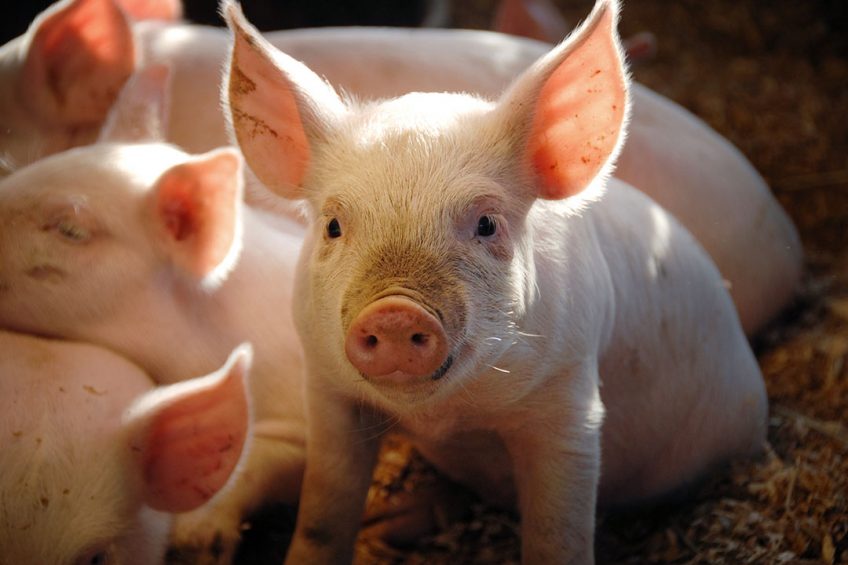Exploring the digestive tract of weaned piglets

One of the main challenges in the swine industry is the reduction in antibiotic use and also, in some regions, the removal of zinc oxide in pre-starter diets. Due to this, the focus on the microbiota of the pig’s digestive tract as well as evaluating alternative solutions to the weaning challenge has exploded.
At weaning, several significant physiological as well as physical challenges are faced by the young piglet, such as nutritional changes, removal from the sow, environmental changes and mixing with unfamiliar piglets. These issues challenge the maturation of the fast-developing digestive tract, the colonisation of beneficial microbiota, and adaptation of the immune system.
The intestinal mucosal barrier separates the internal environment from the external luminal environment and thereby serves as the first line of defence against pathogens, antigens and other irritants. In the lumen, the epithelial cells covering villi and crypts, are protected by an unstirred layer of water and mucus allowing passage of nutrients. Adhesion of commensal bacteria also provides resistance towards pathogen colonisation. Below the epithelial layer is the lamina propria which contains capillaries, mucus secreting glands and is rich in immune cells. Due to the intestine being approached by huge amounts of antigens from feed and micro-organisms, the intestine has its own specialised immune defence; the gut-associated lymphoid tissue (GALT) which comprises approximately 80% of the immune system. It has been demonstrated that probiotic supplementation is stimulating both innate and acquired immune functions.
Gut microbiota development
The gut microbiota consists of a very large number of micro-organisms. Bacteria make up the majority of this and both commensal and pathogenic bacteria colonise the intestines. Whereas the commensals live in symbiosis with the host, the pathogens can cause damage and inflammation if conditions allow them to grow beyond normal levels. Such conditions could occur during weaning.
Pig gut microbiota starts to develop at farrowing and is said to be fully developed when the pig is about 10 weeks old. The composition of the gut microbiota as well as the size of the microbial community differs between the different compartments of the digestive tract. It is not stable and fluctuates over time, especially whilst it is not fully developed. The balance between the microbial species can easily be disturbed by changes in the diet, lack of nutrients, illness and stress until a stable microbiota is established. Interplay between the intestinal tissue, the immune system and the microbiota is complex and fragile towards changes that can cause imbalance to this establishing system. The weaning process is shown to affect the intestinal barrier function negatively. The exposure to nutritional, immunological and environmental weaning challenges, increases the susceptibility to pathogens by the intestine which affects the intestinal integrity negatively. Furthermore, a lack of nutrients in cases of anorexia causes degeneration of epithelial cells and villi height, resulting in reduced absorptive surface and allowing access for pathogens. The avalanche that is initiated by the weaning process causes comprehensive consequences for the piglet such as reduced growth, prolonged time of recovery and establishment of this complex system. This can have an economic impact for the producer.
The benefits of probiotics
Probiotics for weaned piglets are often used as a means to prevent intestinal disorders and to improve the performance of pigs. This is achieved by various mechanisms depending on the type of probiotic. Bacillus-based probiotics can change the microbial conditions in the intestines leading to a more stable and diversified bacterial community with more beneficial and less harmful bacteria. However, different probiotic strains may do this in different ways and to different degrees. It all depends on the strain.
Figure 1 shows the modulation of the ileal microbiota in pigs when BioPlus, a dual strain bacillus-based probiotic, was fed. This probiotic from Chr. Hansen consists of Bacillus subtilis (5750) and Bacillus licheniformis (5749). Using qPCR techniques, the composition of the microbiota was studied, and it was found that the supplementation of the probiotic increased the number of beneficial bacteria such as Lactobacillus, Bifidobacterium, Bacteroides, Prevotella and Porphyromonas. The prevalence of Roseburia and Clostridium cluster IV, which produces butyrate was also increased.
Figure 1 – In-feed supplementation of Bacillus subtilis (5750) and Bacillus licheniformis (5749) and the effect of pig ileal microbiota.

Probiotic bacterial strains excrete enzymes into their surrounding environment with the aim of converting the nutrients to small molecules that can be transferred into the bacterial cell. This means that they excrete all enzymes needed to convert fibres and proteins into absorbable molecules increasing the pool of nutrients available to the pig at the same time. However, to which degree the strains are capable of excreting enzymes in a sufficient amount, so the host animal benefits from it varies considerably between strains. The probiotic features such as positive modulation of the microbiota and excretion of enzymes have a positive effect on the performance of the pig such as increase of average daily gain (ADG), feed conversion ratio (FCR) and decrease in post-weaning mortality.
Table 1 shows the number of trials where a positive deviation in ADG and FCR was found in weaned piglets fed Bacillus subtilis (5750) and Bacillus licheniformis (5749) compared to a control. The table summarises the 32 trials involving approximately 7,000 piglets.
Figure 2 – Post weaning mortality in piglets fed bacillus-based probiotic during the nursery.

Figure 2 shows the impact on post-weaning mortality in weaned piglets fed Bacillus subtilis (5750) and Bacillus licheniformis (5749) compared to a control. The probiotic, that was fed in the nursery phase, lowered the mortality compared to piglets not fed probiotics. The reduction in post weaning mortality and the improved performance described above, show that bacillus-based probiotics are a valid tool in the nursery unit to overcome the challenges that often occur.
Authors: The Swine Technical Team, Chr. Hansen












